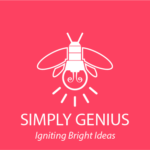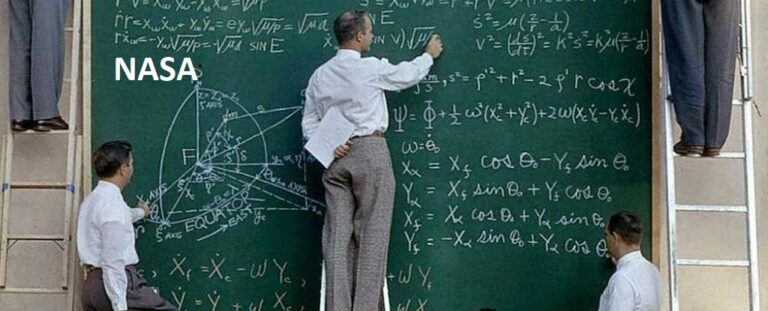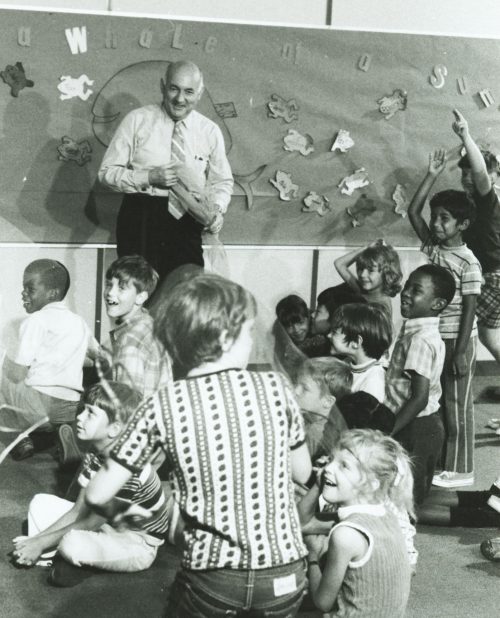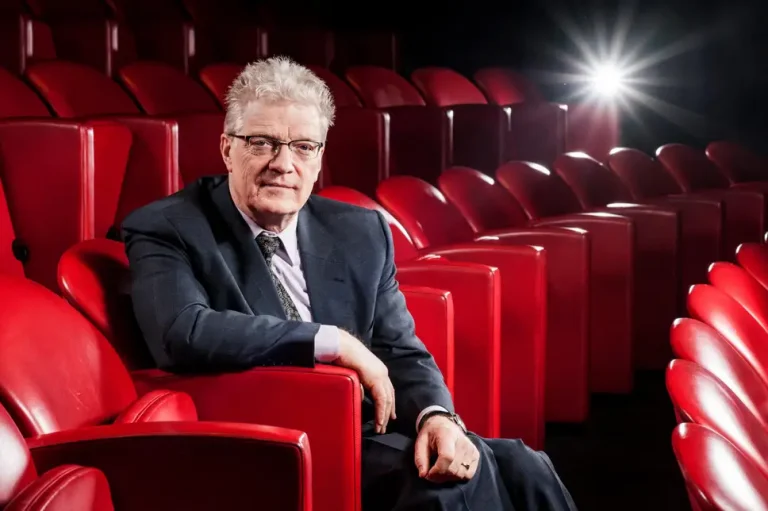
I know, I know… I keep telling you you’re already a genius. But what makes me so confident about this? Well, for you rational thinkers, let me offer a little background.
By now you’ve probably heard about children testing at the creative genius level in their earlier years. This is when curiosity, creativity, wonderment, and discovery are more accessible to them, typically between the ages of one and about ten years of age.
Why only ten? We’ll get to that later. But I can tell you that these days, there are more organizations and people slowly acknowledging the importance and value of this earlier style of thinking. There’s the Adobe Creativity Test, the Britannica Curiosity Test, and the Torrance Test of Creativity, to name a few.
And you’ve most likely also heard of Sir Ken Robinson, an educational and creativity expert, who rallies against school systems weeding this natural style of thinking out of children at an early age.
Then there are doctors John Land and Beth Jarmen who recognized this disparity back in the 60s and are the first ones to develop the earliest of these genius creativity tests to indicate and promote higher levels of thinking ability.
In 1968, NASA asked Dr. George Land and Dr. Beth Jarman to develop a creativity assessment test to help NASA find and recruit the brightest and most creative minds in engineering and science. Their test turned out to be a huge success in finding the right candidates!1
Here’s an interesting discovery that led them to do even more research:

This test, in fact, performed so well at identifying the best candidates that they became concerned about its simplistic design, and at one point, because of its sophisticated and early success, they actually began to question the validity of the test.
They began to wonder, was this test really as accurate and unequivocal as they thought? So, Land and Jarmen decided to expand their research to see how well it would work in other areas of development. They decided to give this same test to five-year-olds to test their level of creative thinking abilities.
The results they found were astonishing.

Initially, they took a group of over 1600 children to give this test. And when compared with 2000 adults who were also tested, 98% of the children at this age scored genius level on the creative thinking scale. They blew the adults completely out of the water. These surprising findings were so amazing and unexpected that they decided to continue this longitudinal testing to see how far this level of thinking could be sustained.

So, just five years later, now at the age of ten, they retested the same children and found that only 30% could still access this heightened level of creative thinking. Think about that.
And just five years after that, now these children are of high school age, and this same group of children dropped their heightened creativity level by 68%.

This meant that the majority of them had a profoundly diminished change in their ability to access their most valuable thinking attributes, while about only 12% were able to retain their best creative thinking abilities.
Their most divergent thinking was dramatically inhibited. What happened? What caused such a diminished change in their most natural abilities?
These researchers found that two major events had occurred. One, they reasoned, is that there had been a dumbing-down effect due to our school systems. And in fact, sir, Ken Robinson speaks directly on this very topic.
Robinson suggests that schools create a funneling down effect, which causes all the children in the system to look for the one answer in order to pass, rather than teaching them how to trust in their natural intuitive ability to look for multiple and divergent answers and solutions. Their most natural gifts get weeded out of them, replaced by a uniformed style of rational thinking. They further discovered that this non-creative behavior… get this… is learned.2

This homogenization of learning directly causes a short circuit in one’s naturally intuitive thinking ability. And secondly, this limiting change is further compounded when stifled by tribal beliefs.
This tells us that not only are we getting conflicting messages about how we should think, act, and the way we learn in school, it’s further compounded by the limiting practices from our families, communities, societal and peer groups, as well as through religious and political affiliations.
I bet now you’re wondering how does one overcome this stagnant, nonproductive style of limiting thinking, and get back to a place of heightened creative and divergent thinking that’s both powerfully long-lasting and life-altering?
It may sound simplistic, but in fact, people do this all the time. They retrain their mind to think more intuitively and divergently. This has been well-documented in top athletes, Olympic performers, and some of the more radical entrepreneurs, as well as artists, writers, designers, engineers, (some) scientists, and many others.
And typically, at this stage of the conversation, I get the argument that the most disruptive people are probably geniuses. And yes, that’s true; some are classified as genius. But not in the way society deems the term genius. It is often tied to IQ, but it turns out that IQ is not a prerequisite for genius, as illustrated when it comes to arts, sports, fashion, design, or any other creative endeavor.
And furthermore, it has nothing to do with race, creed, social status or upbringing, religion, political affiliations, financial opportunity, or anything else considered to be an advantage over others.
Genius simply comes from one’s ability to see things differently, to express one’s own unique creativity, and to look at life from a non-rational, non-conventional perspective.
Now that you know you already possess the right type of thinking, and you now know that you were actually taught not to use it, how do you feel?
And what if I told you that this higher level of intuitive, divergent, creative thinking, was something that you’re capable of tapping into at any time and that you could learn to regain unlimited access to these abilities whenever you desire, how would your life be different? How would things be for you if you had unrestricted admission to these higher levels of thinking?
I realized that not everyone necessarily wants to be a Disruptor; I get that. There are some people who are just looking for a life that’s more balanced, enjoyable with little surprise, and one that has little overwhelm and that’s okay. Not everyone has to disrupt in order to live the life they choose.
But if you’re someone who’s been restless and desires to unlock your natural mindset, and access your full abilities, this is achievable right now. It takes a commitment for change in two important areas. One, a reframing of your belief system, and two, the willingness to go deeper than you have in the past.
In fact, many of the people who have had the most profound, disruptive impact on their fields were initially not great students. For many of them, there was nothing previous to base their ideas upon in order to prove their concepts to be sound beyond a shadow of a doubt. But this is why intuitive thinking seems so illogical, irrational, and ungrounded.
Yet we marvel at those unique individuals who keep changing the status quo, who go in a different direction, and who keep showing us there is another, better way. And we fight to figure out how they did it, and how we too can do the same.
“It’s kind of fun to do the impossible.” ~ Walt Disney
Here are 5 tips to get you back onto the path toward your most natural thinking style.
1: Take a Test. First, let’s identify how you think now. Relax, this won’t be some daunting, dishearteningly deep examination that leaves you drained and confused. In fact, these tests are kind of fun. Both are short, but they illustrate where you are now and where you could be (very soon).
2: Reclaim Your Sense of Wonderment. As primarily a rational thinking adult, at first, this will seem a bit silly and frivolous because adults typically approach everything with an expectation of knowing the outcome. Adults require empirical proof, confirmation, and consistency. They aren’t used to dwelling in the unknown, unobvious, or unusual. For this exercise, I want you to approach everything as if it is new. Think of everything you encounter as a new adventure. Use your sense of wonderment to get in touch with your sense of fascination. Explore, experiment, discover.
3: Daydream. Give yourself a break from all the external noise. If everything is always coming at you and you are constantly reacting, then you are in a convergent state, meaning you are looking for conclusions or a sense of completion, checking off something on your ToDo list. Instead, I want you to give your mind a break. The quieter things are for your mind, the more your daydreaming abilities will come out to play. In this way, instead of everything coming at you, typically to get solved or completed, your mind will begin to wander. This is how divergent thinking works. Your mind goes in search of something new, different, and creative. It begins to imagine, fantasize, and play. Suddenly, you’re in the realm of the creative mindset. To successfully reach this state, you must learn to shut off all the outside noises and distractions. Turn off the radio, TV, and smart devices for a while. Go for a long walk in nature. Go to a lake, stream, ocean, or river and just sit. Sit in a park alone with your thoughts. Cloud-watch. It will take a little practice, but soon your daydreaming mind will come out to play.
4: Ignore Rational Thinking While Creating. Two things cannot exist during the creative process, rational thinking and ego. Yes, before you challenge this, there are creative people you can name who have huge egos. That is true, but not during the creative process. It won’t work. You won’t be able to create on a bigger scale. In order to attain heightened levels of radically creative thinking, you have to place both your ego and your rational mindset on hold. Creativity should be free, uninhibited, unencumbered. Don’t worry, you can always access them at other times, but once you begin to reacquaint yourself with your intuitive mindset, you may enjoy being in this world of the imagination a lot more.
5: Give Yourself Permission to Be Messy. Have you ever seen an artist at work? How about a playwright, writer, novelist, or even a chef? In the creative process, when they are first experimenting, investigating, and exploring, everything about their process is messy. Paint-spattered drop cloths, ink stains, strewn, wadded-up pieces of discarded paper, sticky clay or Papier-mâché, bits of food, and a sink full of dirty utensils, pots and pans, and dishware. They are in the messy discovery phase. Allow yourself the permission to let your hair down, to roll up your sleeves, to get your shoes and pants muddy. Enjoy the process, forget about the goal, and just see where it takes you. Sloppy is not caring. Messy is freeing. Being messy is about not editing yourself.
Being organized allows you to find things.
Being messy allows you to discover things.
Give your rational mind the week off and see where you go. I’ll bet you’ll even end up surprising yourself.
FOOTNOTES
- Breakpoint and Beyond: Mastering the Future – Today, Ainsworth-Land, George T., Jarmen, Beth, HarperBusiness, 1992
- Out of our minds: Learning to be creative, Robinson, Ken, Oxford: Capstone, 2001